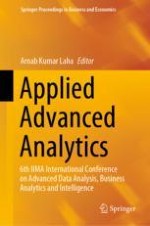This book covers several new areas in the growing field of analytics with some innovative applications in different business contexts, and consists of selected presentations at the 6th IIMA International Conference on Advanced Data Analysis, Business Analytics and Intelligence. The book is conceptually divided in seven parts. The first part gives expository briefs on some topics of current academic and practitioner interests, such as data streams, binary prediction and reliability shock models. In the second part, the contributions look at artificial intelligence applications with chapters related to explainable AI, personalized search and recommendation, and customer retention management. The third part deals with credit risk analytics, with chapters on optimization of credit limits and mitigation of agricultural lending risks. In its fourth part, the book explores analytics and data mining in the retail context. In the fifth part, the book presents some applications of analytics to operations management. This part has chapters related to improvement of furnace operations, forecasting food indices and analytics for improving student learning outcomes. The sixth part has contributions related to adaptive designs in clinical trials, stochastic comparisons of systems with heterogeneous components and stacking of models. The seventh and final part contains chapters related to finance and economics topics, such as role of infrastructure and taxation on economic growth of countries and connectedness of markets with heterogenous agents, The different themes ensure that the book would be of great value to practitioners, post-graduate students, research scholars and faculty teaching advanced business analytics courses.
